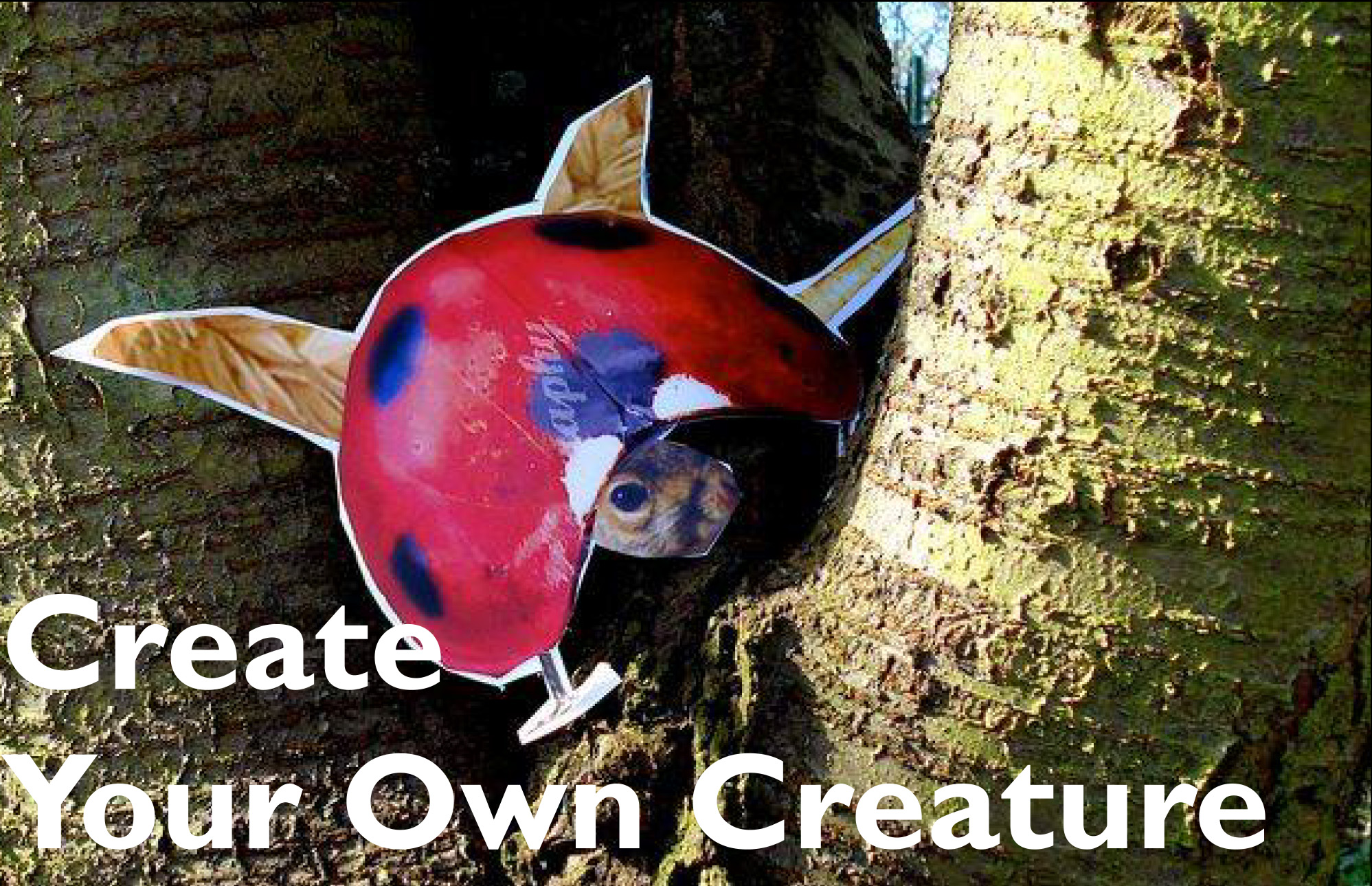In this activity, participants use pictures of a wide range of animals to design their own creature in collage. This can be encourage thought about why animals are shaped the way they are and how they relate to their habitat.
The Activity
Artform/Type of Activity
- Collage
Objectives/Outcomes
- To gain understanding of different creatures, anatomy, function etc.
- To develop understanding of what a habitat/ ecosystem is
- To develop imaginative and creative thought
- This exercise can be used to stimulate thinking and speaking skills and to enhance creative writing
Materials Required
- Pictures of insects (minibeasts), animals, birds etc. relevant to the habitat you are studying – to be collected prior to workshop
- Scissors
- Sheets of A4 thin card or thick paper
- Glue/ glue spreaders
Space Requirements
Classroom or work room with sufficient table top space for the number of participants
Activity Instructions
- (Prior to workshop): source and print off images as indicated above eg from the internet. Make sure the images are as clear as possible and print several copies of each you find – remember that every participant will need ‘a head, a body, legs, feet, wings, feelers, a tail’ etc. Each final invented creature will need to fit on to A4 so use this as a size guide.
- Artist/ Teacher/ Leader (A/T/L) shows participants some of the complete images, eg a butterfly, a beetle, a frog, a bird etc, and talks about the various body parts – name, function and so on; where possible relate this to the habitat and/or wildlife site the group is studying. A/T/L then talks about inventing creatures out of parts of other animals – what would a worm do if it had butterfly wings; what would a wasp be like if it had the head and beak of a bird; what would a spider be like if it had no legs like a slug, or spikes like a hedgehog, or feathered wings etc.
- A/T/L divides the participants into small groups, and gives each group a selection of complete pictures, and scissors.
- A/T/L instructs the group on the cutting out – ie a head, the wings, the legs, the tail etc.
- Each participant is given a sheet of thin A4 card or thick A4 paper.
- Participants play around with cut out body parts; A/T/L gives guidance on construction – ie each creature must have (at least) a head, a body etc.
- Once participants are happy with their invented creature they can stick the body part images on to the card; then, when the glue is dry, cut the creatures out.
- A/T/L invites the participants to tell the group about their particular creature – what might it be called, where does it live, what does it eat, how does it move about, is it nocturnal, does it live by itself or with others etc. This can then be used as the basis for a piece of imaginative writing, extending vocabulary and developing thinking about issues such as form and function, habitat systems and so on.
- A display can be made of the ‘re-imagined habitat’, possibly with ‘labels’ giving a digest of ‘facts’ about each new creature.
- Further work could be done mounting the card creatures on to the ends of sticks and ‘planting’ them in wildlife settings to photograph.
Curricular Links
Links to Art and Design through: recycling/ re-using images
Links to Science through: introduction to biology, form and function, habitats, eco-systems
This resource was designed as part of the Green TV project.
PDF Work Sheet
See our A to Z of creative activity resources here.
Funded By
The creation of this resource was made possible by funding from the Heritage Lottery Fund.

